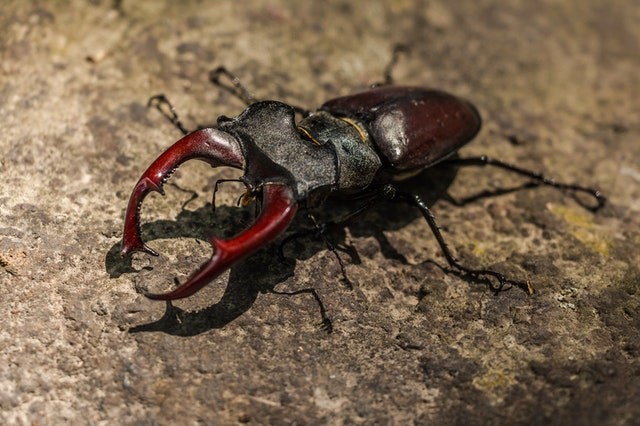Two beetles donated to the London Institution by a farmer were found to be nearly 4,000 years old, scientists say.
The two beetles were donated by a farmer who was scared that they might be invasive pests that might threaten crops. The farmer was from eastern England and found the two insects when he was gathering wood and ploughing. They were dead when he found them. He submitted them to the institution with the large wet oak tree they inhabited. After examination it was concluded that they weren't harmful, hence they were stuffed in a drawer.

New Discovery About The Bog Beetles
New details are now being discovered about the beetles. They are Oak Capricorns (Cerambyx). The two were found in a piece of an oak tree in the 1970s. Prior to their discovery, they were thought to be non-existence in Britain.
These beetles were as big as an adult-sized thumb with long antennae. If they were alive in this modern era, they would have been one of the biggest beetles in the country. "They're as big as a stag beetle," said Max Barclay, a senior curator of insects.
This species can be found presently in Germany, France, Poland, Hungary, all the way to Slovakia. The researchers in the UK collaborated with Americans to determine the actual date of both the wood and beetle. The beetle was found inside the oak wood so they should be about the same age. This was done to test the dating technique to see if it would yield the same result. It's a kind of Rosetta Stone moment." one of the researchers noted.
ALSO READ - Newly Discovered Darkling Beetle Species Has Larvae That Can Degrade Plastic

The Real Age Of The Bog Beetle
From carbon dating, it was concluded that the oak and the beetles are 3,785 years old. They existed during the bronze age when the weather condition was warm and dry. The beetles are an indication that there were more forests and vegetation back in the bronze age than there are now. Today, East Anglina, one of the nine official regions of England has cleared most of its ancient woodlands.
There are currently 8-10 million beetle species in the NHM, this is why it took almost forty years to know more about this particular species of beetle. According to what Max told BBC News, these beetles are so much that if you are to examine them one after the other, you would still find new details.
Even from insects discovered by naturalists like Charles Darwin and Alfred Russel Wallace. Wallace found about 80,000 beetles while working in the "Malay Archipelago" and Darwin gathered about 8,000. There are more discoveries to be made every day. The story of the beetles would be featured in an episode of Natural History Museum, airing on January 28 at 20:00 GMT.
Other Species Of Large Beetles
The titan beetle (Titanus giganteus) is the world's largest beetle, it is native to South America. They measure up to 6 inches and have strong mandibles. The larvae are wood borers but the adult-sized beetle can inflict painful bites. It was said that an adult beetle once broke a ruler used by a photographer.
For more news, updates about beetles and similar stories, don't forget to follow Nature World News!
© 2025 NatureWorldNews.com All rights reserved. Do not reproduce without permission.





